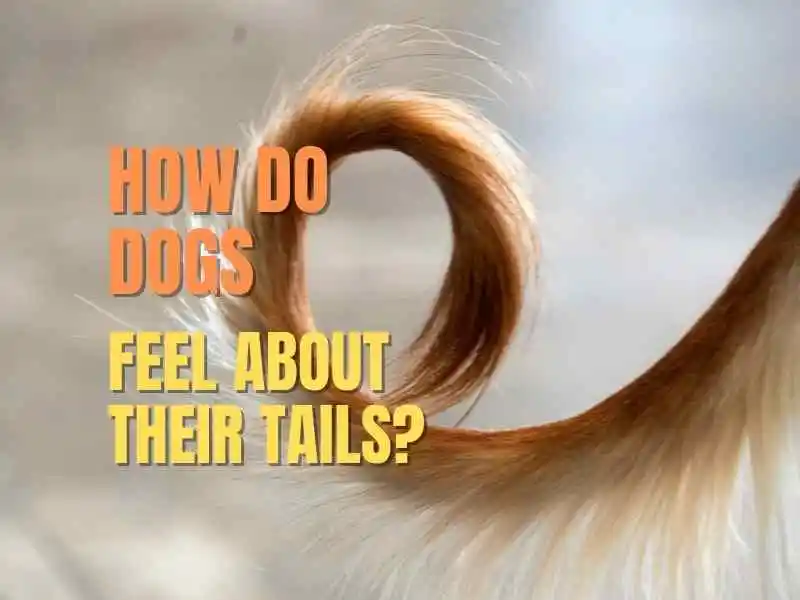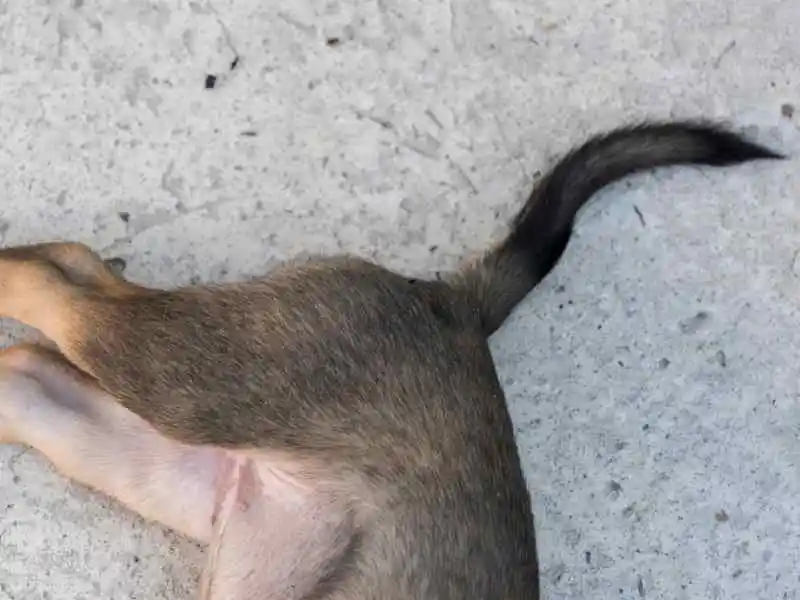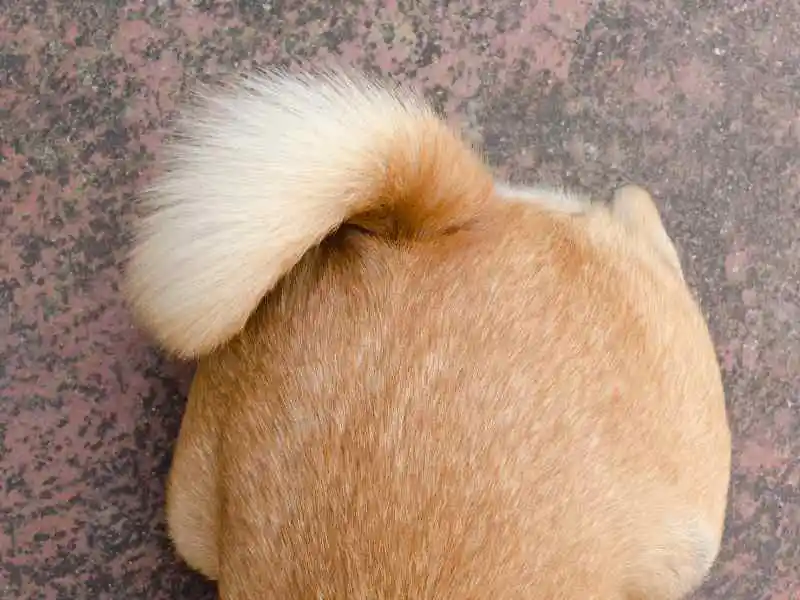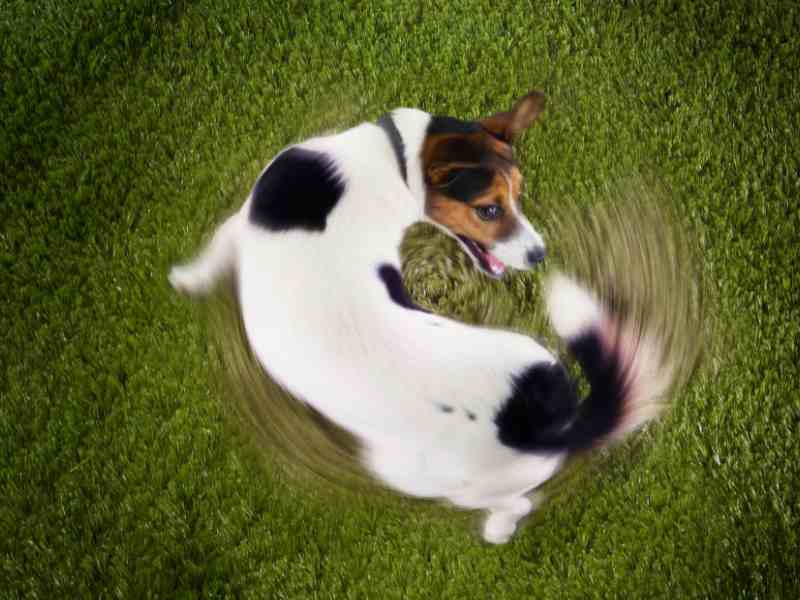The tail is a significant organ of a dog’s body. Its particular movement or position is a reflection of the doggy’s feelings. Thus, it helps communicate to humans what their furry friends feel. But how do dogs feel about their tails? Not only is it important to know what tails’ movements signify, but it’s also significant to know how doggies feel about this body part.

Let’s find out:
- do dogs know what their tail is?
- can dogs feel their tail wagging?
- do dogs know it’s their tail?
- what do dogs tails tell you?
- can dogs feel their tail?
Can dogs feel their tail?
Do dogs know it’s their tail? Indeed, all doggies know and feel their tails. For example, when you touch their tail, they sense it. Dog tails have nerves and pain receptors. Like any other body organ, they know it’s part of their body too. Following are some of the instances which can inform you that dogs feel their tails;
- Stepping on tail
If you mistakenly step on your canine’s tail, it may wince or yelp, thus indicating it feels pain. As the tail isn’t thick like other body parts, it hurts more if you step on it. In addition, the bones and nerves in the tails are near the surface, so it makes sense if the dog feels more pain in the tail than other organs.

However, at times, it’s also possible that dogs don’t feel much sensitivity in their tails. But that’s highly unlikely.
- Injuries to tail
The presence of bones and veins in a dog’s tail makes it bleed a lot when injured. Also, the tail is attached directly to the canine’s backbone. Therefore, an injured tail affects the spinal column too. Hence, it would be best not to take tail injuries lightly and immediately get your furry kid the proper treatment.
Furthermore, nerves leading to the dog’s tail may not work due to spinal column-related injuries. Thus, the furry creature may experience numbness in its tail. So, in case you witness your pup not yelping, if you accidentally step on its tail, then the reason can be the same numbness.
Nonetheless, if your canine friend is not experiencing any injuries, they should feel their tail usually.
- Pulling the dog’s tail
When you pull your furry kid’s tail, it feels the same when someone pulls your arm. So, tugging a bit won’t harm. However, it can annoy the doggo. Moreover, forcefully pulling the tail can hurt the furry creature and even dislocate its tail.

Also, some doggies feel more sensitivity in their furthest extremity than other canines. Thus, they hate it if humans touch their tails. Hence, it’s better not to tug a dog’s tail, not even to catch its attention. Also, note that pulling on a tail can make your pet aggressive, which may prove harmful.
- Breaking of tail
Dog’s tail can break as it contains bones. These bones can get fractured due to any severe accident experienced by the tail. Although – technically speaking – doggies don’t need their tails. Yet this organ has some essential functions to perform.
For example, canines communicate through their tails. Some breeds also use tails to balance and cannot perform physical activities without this body part. Moreover, the tail’s connection to the spinal column is significant too.
Furthermore, getting proper dog treatment for a tail break is necessary. Without professional remedy, it may grow incorrectly.
As a result, the furry creatures may experience pain and soreness their entire life. Also, infections can take place due to a tail break. These infections can prospectively be life-threatening. Thus, you must avail the services of your veterinarian for it.
Why do dogs chase their tails?

Do dogs know what their tail is? Yes, dogs know that their tail belongs to them, just like they know about their legs. They can perfectly feel where their tail is in the space. Yet dogs chasing their tails is perplexing for humans. But there is a reason for this rare activity.
The canines chasing their tails often have mental health or behavioral issues. The problems can be boredom, anxiety, aggression, and overstimulation. Several studies have discovered that dogs chasing their tails is due to stress and boredom.
An example can be that of Bull Terrier dogs. The evidence showed that tail chasing in this breed is due to the following two causes;
- Aggression
- Entering trance-like states.
Thus, furry creatures chasing their tails doesn’t mean they don’t know about their furthest extremity. Instead, it’s a sign of potential mental and behavioral issues.
What do dogs’ tails tell you?
Tail wagging and placement are two significant things to throw light on what doggy’s tail apprises to humans.
Tail wagging in dogs – a way to communicate
Can dogs feel their tail wagging? Yes, they do thus, showing yet again that canines are aware of their furthest extremity. Moreover, it’s a fact that dogs control the movement of their tails, but it’s not always the case. For example, many times, hounds start wagging their tails instinctively. Thus, it’s not a result of conscious thought, more like how humans frown out of instinct.
Communication with the pack
Tail wagging has an entire history. The practice in canines has developed from their ancestors, viz., wild dogs and wolves, as a method to talk to their pack and other animals. That’s because it’s easy for a pack to identify tail wagging even from a distance and, thus, comprehend the situation.
However, with time, tail wagging evolved into a complicated and exaggerated activity. For instance, some dogs developed longer and fluffier tails later, making it possible to communicate via wagging from a farther distance.
Also, some tails became lighter on the underside, while some started having black or white tips on their end. Hence, all this made it easy for the pack to identify the doggo while it moved its tail and facilitated communication.
Communication with the humans

Dogs wagging their tails were once a way to communicate with their pack. However, the practice has evolved over the years into communicating with their humans as well. You can tell what your pet feels or wants to say by looking at the movement of its tail. Thus, what dogs’ tails tell you is no longer a mystery!
Canines express different emotions by wagging their tails in different ways. Usually, your dog is happy or blissful when it wags its tail. For example, if tail wagging is in the right direction, your pet is joyous, and there is no way it’s likely to get aggressive.
Also, the furry creature is highly buoyant if this tail movement is joined with the whole backend area of your hound moving from side to side.
However, tail wagging does not always symbolize happiness. At times, tail movements signify that your canine companion wants to interact with you or another doggo. Moreover, they can also convey the canine’s fear.
For instance, moving the tail to the left shows the dog is afraid or scared. It also means your pet is anxious about the present situation. Furthermore, if the tail is stiff during the same event, it demonstrates the doggy’s discomfort.
Also, a fast wag can show excitement and agitation, while a slow movement can signify uncertainty. Finally, if a canine tucks its tail, it feels unsafe and tries to secure itself against any potential danger.
Furthermore, tail wagging is an instinctive behavior; therefore, dogs need no training for it. However, humans must train themselves to understand what tail wagging signifies in a doggy. You can pay attention to your pet’s body language and how it wags its tail in different situations.
For example, notice how your furry kid behaves in a new place and how it moves its tail at that moment. You can also observe the tail movements when your pet experiences a stressful event. Eventually, you will comprehend how your doggy communicates via its furthest extremity.
Tail placement in dogs – a way to express emotions

Tail placements are another way to tell humans how dogs are feeling. Following are three different ways dogs place their tails;
- Up: When dogs’ tails are up, they are alert. Being alert cannot always be considered a positive sign. Instead, it can be a cautionary signal. However, a high tail also shows dominance and confidence. Moreover, a still, up tail signifies your pet feels like a top doggo and doesn’t fear to express it.
- Down: A low tail usually signifies a dog’s nervousness or fear, especially if the tail starts to curl between the canine’s legs. In such a situation, a dog’s tail symbolizes submissiveness around other dogs and people. If you notice a low tail, try to avoid instant movements or other acts that may perturb the doggo.
- Horizontal to the surface: Your pet demonstrates a neutral attitude if its tail placement is horizontal to the floor. This translates to your doggy being curious about a particular thing. Moreover, it also means the furry creature is exploring a specific person or thing and trying to decide what to do.
Your dog is a dear member of your family. Therefore, it’s essential to know what it feels about its particular body part, like the tail, and how it uses its furthest extremity to communicate. This way, you can better care for your canine best friend and fulfill all its needs.
